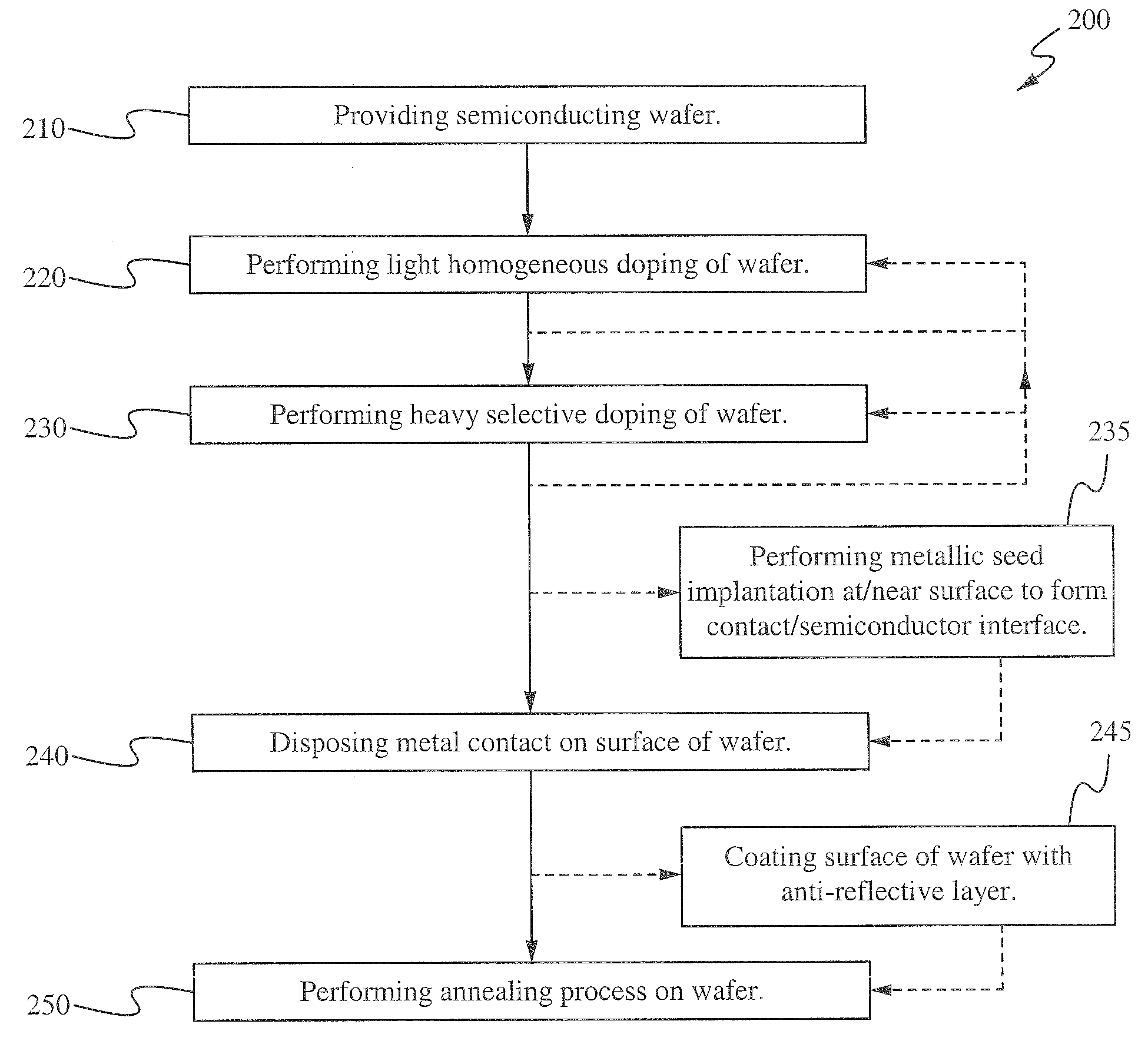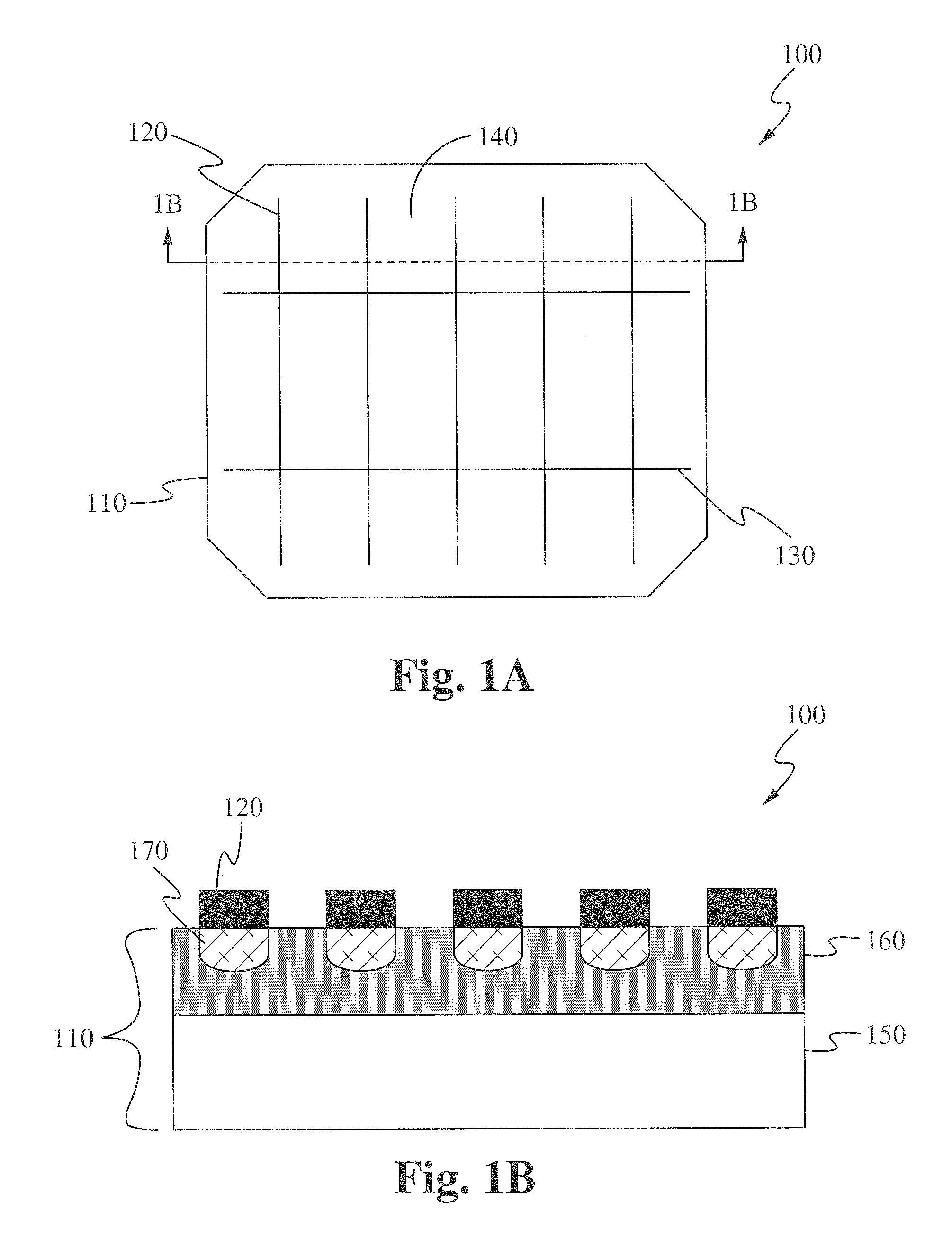Formation of solar cell-selective emitter using implant and anneal method
a technology of solar cells and emitters, applied in the field of solar cells, can solve the problems of lack of utilization of blue light, varying light absorption and electron-hole generation performance, and affecting the production of final products, so as to achieve the effect of improving performan
- Summary
- Abstract
- Description
- Claims
- Application Information
AI Technical Summary
Benefits of technology
Problems solved by technology
Method used
Image
Examples
Embodiment Construction
[0037]The following description is presented to enable one of ordinary skill in the art to make and use the invention and is provided in the context of a patent application and its requirements. Various modifications to the described embodiments will be readily apparent to those skilled in the art and the generic principles herein may be applied to other embodiments. Thus, the present invention is not intended to be limited to the embodiment shown but is to be accorded the widest scope consistent with the principles and features described herein.
[0038]FIGS. 1A-10B illustrate embodiments of a solar cell device, its characteristics, and its formation, with like elements being numbered alike.
[0039]FIGS. 1A and 1B illustrate a plan view and a cross-sectional side view, respectively, of one embodiment of a solar cell 100 drawn to different scales in accordance with the principles of the present invention. The solar cell 100 comprises a wafer 110. In some embodiments, the wafer 110 is a 1...
PUM
 Login to View More
Login to View More Abstract
Description
Claims
Application Information
 Login to View More
Login to View More - R&D
- Intellectual Property
- Life Sciences
- Materials
- Tech Scout
- Unparalleled Data Quality
- Higher Quality Content
- 60% Fewer Hallucinations
Browse by: Latest US Patents, China's latest patents, Technical Efficacy Thesaurus, Application Domain, Technology Topic, Popular Technical Reports.
© 2025 PatSnap. All rights reserved.Legal|Privacy policy|Modern Slavery Act Transparency Statement|Sitemap|About US| Contact US: help@patsnap.com



